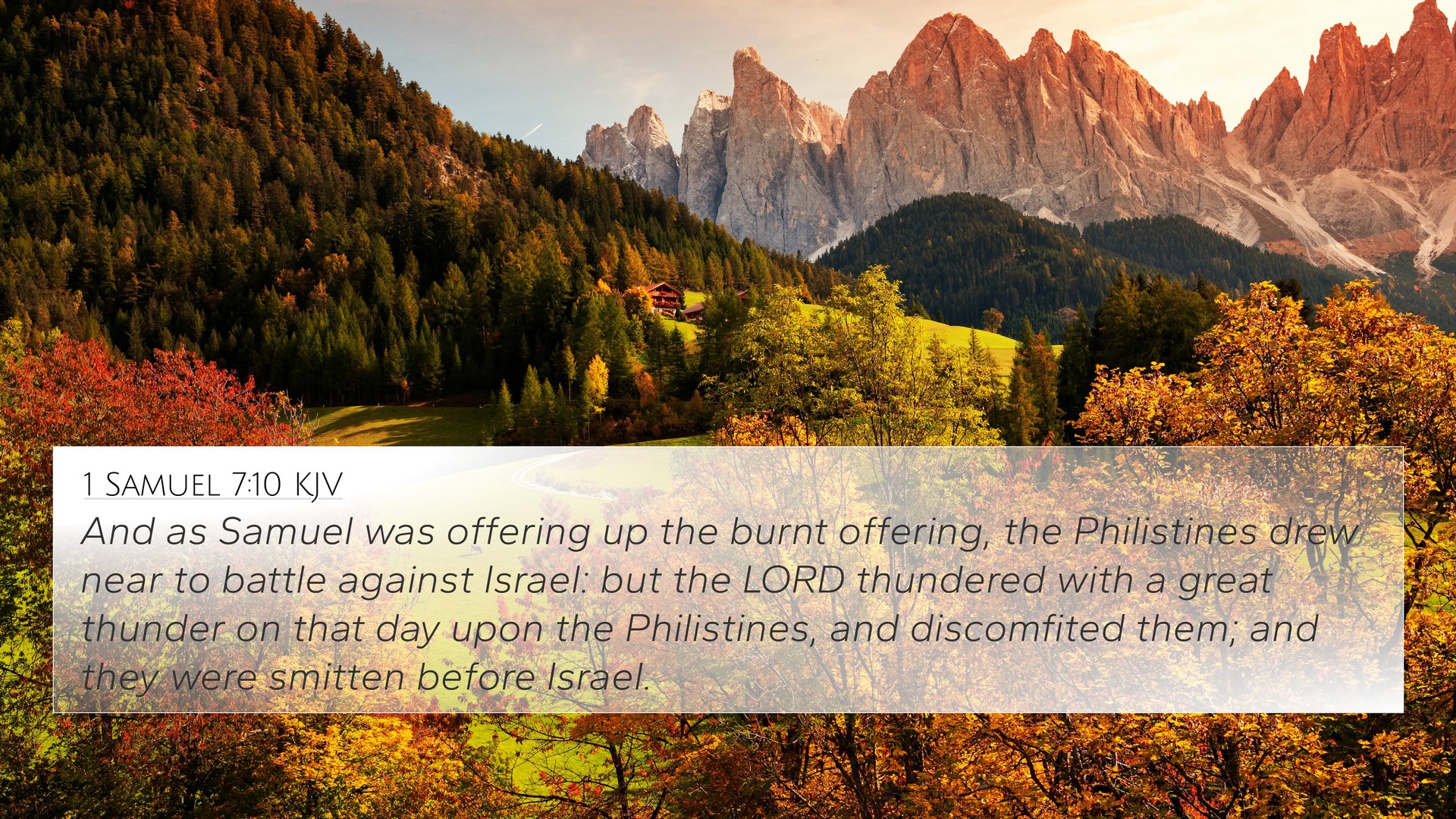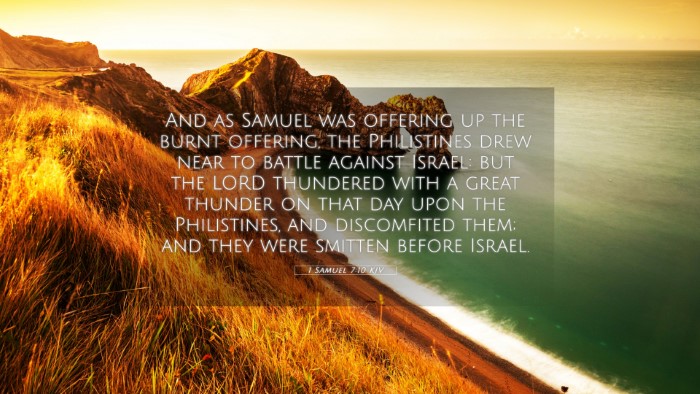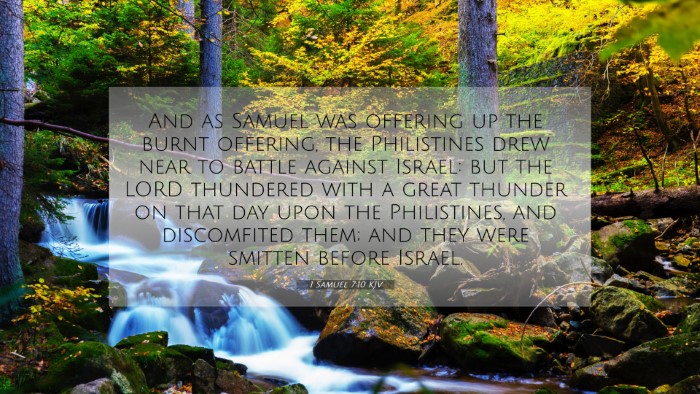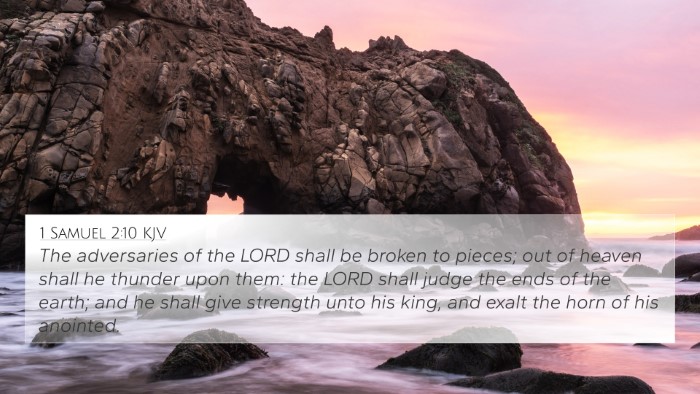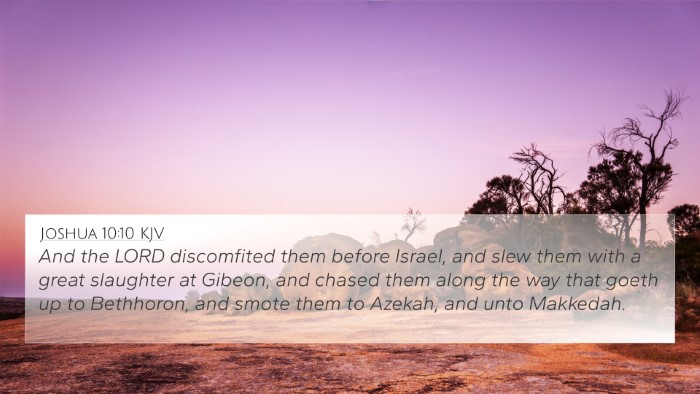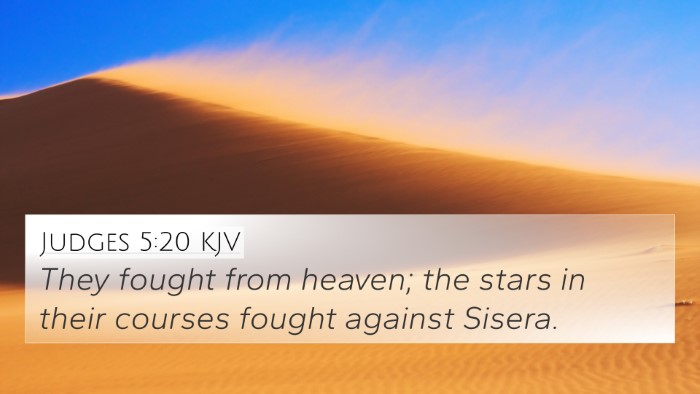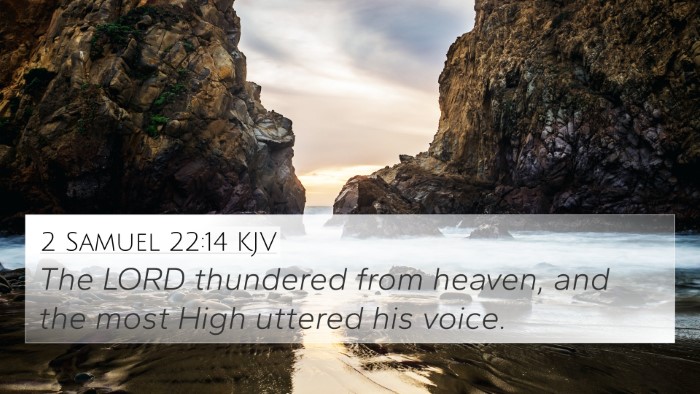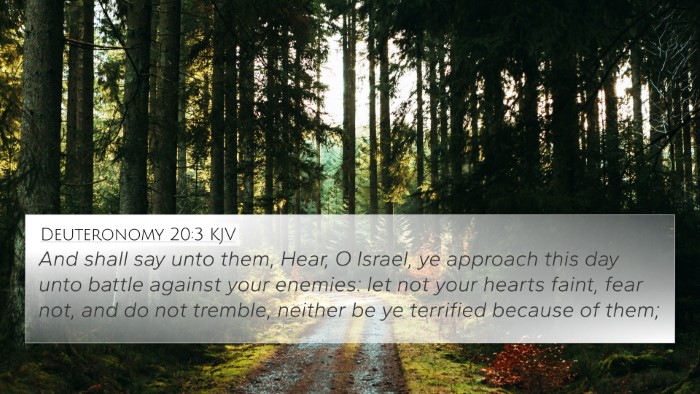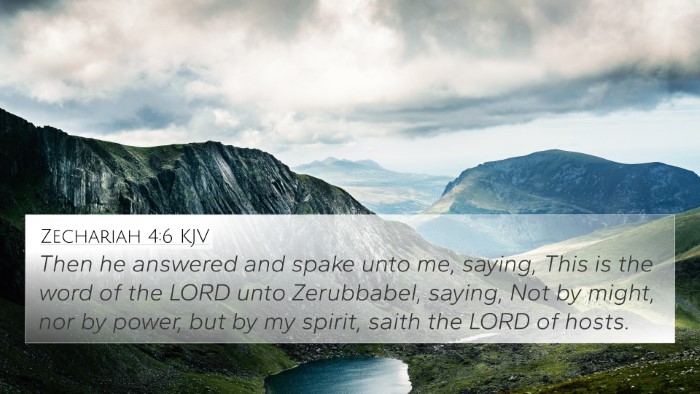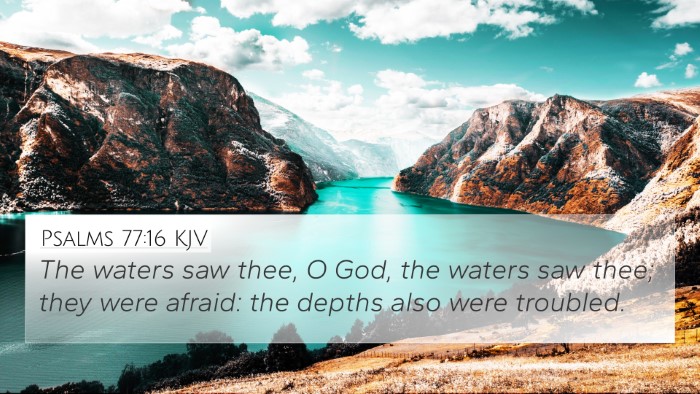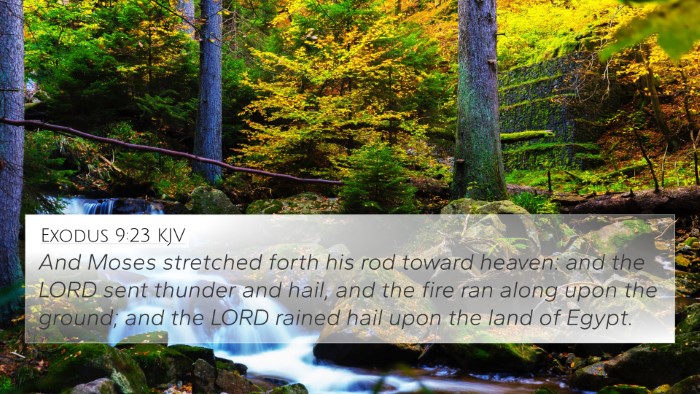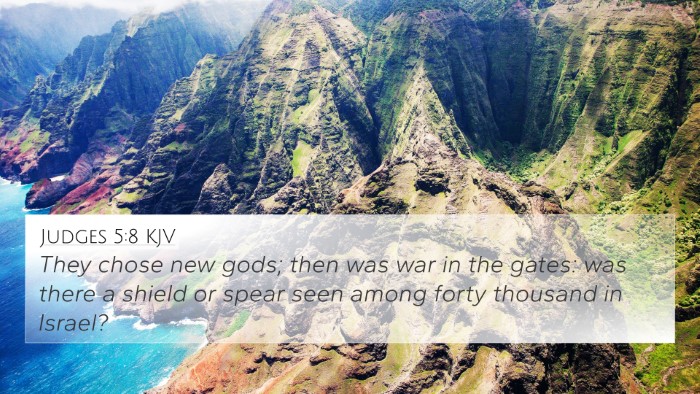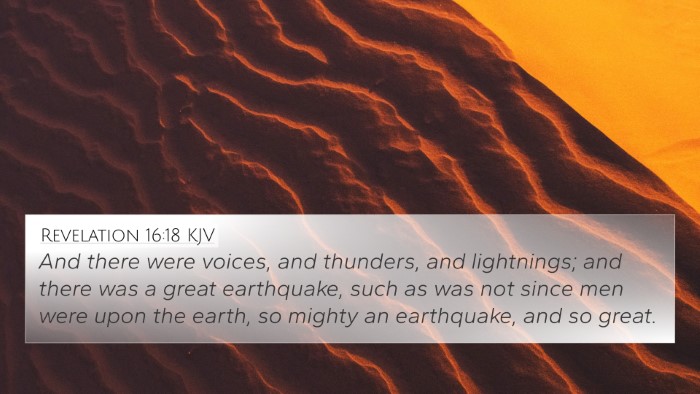Understanding 1 Samuel 7:10
1 Samuel 7:10 states: "And as Samuel was offering up the burnt offering, the Philistines drew near to battle against Israel: but the Lord thundered with a great thunder on that day upon the Philistines, and discomfited them; and they were smitten before Israel." This verse highlights a significant moment in Israel's history, showcasing God's power in response to prayer and sacrifice.
Summary of the Verse
The narrative occurs during a pivotal time when the Israelites were threatened by the Philistines. Samuel, acting as priest and prophet, offers a burnt offering, symbolizing atonement and dedication to God. The dramatic intervention by God, manifested as a thunderstorm, results in confusion among the Philistines, leading to their defeat.
Commentary Insights
-
Matthew Henry's Commentary:
Henry notes that the action of offering the burnt offering was significant, indicating Israel's dependence on God. He emphasizes the power of divine intervention, illustrating how God can overturn enemy plans and assures His people of His presence through prayer and supplication.
-
Albert Barnes' Notes:
Barnes highlights the significance of the thunder as a means by which God disoriented the Philistines, showcasing that their strength was not able to stand against the might of God. He discusses the symbolism of the burnt offering as a sincere appeal to God for help, demonstrating Israel's return to faithfulness.
-
Adam Clarke's Commentary:
Clarke emphasizes the historic context, explaining that this moment represents a turning point for Israel amidst ongoing conflicts. He elucidates on the importance of the burnt offering, which served as a means of reconciliation with God. His commentary points out that God’s communication through thunder served both as a warning to the enemies and encouragement to His people.
Cross-References
This verse connects with several significant passages throughout the Bible that further illuminate its themes:
- Exodus 14:14: “The Lord will fight for you, and you shall hold your peace.” - showing God’s promise of deliverance.
- Psalm 18:13: “The Lord thundered from heaven, and the Most High uttered His voice.” - illustrating God's power in using nature as His instrument.
- 1 Samuel 10:22: Discusses God's ability to intervene in critical moments, reminiscent of His actions in 1 Samuel 7:10.
- 2 Chronicles 20:15: “The battle is not yours, but God’s.” - reinforcing the message of divine assistance against adversaries.
- Job 37:4: “After it a voice roars; He thunders with the voice of His majesty.” - emphasizing God’s might demonstrated through weather phenomena.
- 1 John 5:14-15: “And this is the confidence that we have in Him, that if we ask anything according to His will, He hears us.” - linking prayer and God's response.
- Isaiah 54:17: “No weapon that is formed against thee shall prosper.” - reflecting the security that comes from faith in God’s protection.
Thematic Connections
This verse reflects a recurring theme in Scripture: the necessity of earnest prayer and dedication to God in times of trouble. The connection between Israel's actions and God's intervention serves as a powerful reminder that faithfulness and reliance on God can alter circumstances.
Conclusion
1 Samuel 7:10 not only recounts a historical event but also reinforces the thematic elements of dependence on God, divine intervention, and the importance of prayer reflected in many other scriptures. The unified message throughout the Bible, as seen in cross-references, encourages believers to seek God earnestly, displaying the assurance that God is actively engaged in the affairs of His people.
Further Study Suggestions
For those looking to delve deeper into the connections and implications of 1 Samuel 7:10, consider exploring:
- Bible Concordance: To find related verses and themes across Scriptures.
- Bible Cross-Reference Guide: A useful tool for identifying links between various passages.
- Bible Chain References: Creating thematic chains that explore God’s faithfulness and intervention.
- Cross-Referencing Bible Study Methods: To analyze and compare the interrelatedness of Scripture accurately.
